Tag: infusion

Propofol-Related Infusion Syndrome in a Child with RSE
Propofol is used for sedation, anxiolysis, anesthesia induction, and as an anticonvulsant. In cases of refractory status epilepticus (RSE), propofol is more efficient than barbiturates. We present a case of a 3-year-old... read more
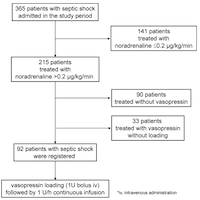
The Vasopressin Loading for Refractory Septic Shock Study
Vasopressin loading may be safely introduced for septic shock. Vasopressin loading may be used to predict responses to its continuous infusion and select appropriate strategies to increase blood pressure. 92 patients were... read more

Propofol in ICU Settings: Understanding and Managing Anti-Arrhythmic, Pro-Arrhythmic Effects, and Propofol Infusion Syndrome
Propofol has revolutionized anesthesia and intensive care medicine owing to its favorable pharmacokinetic characteristics, fast onset, and short duration of action. This drug has been shown to be remarkably effective in numerous... read more

Albumin Infusion May Decrease the Mortality of Hypoalbuminemia Patients with Severe Acute Pancreatitis
Our study revealed that the lowest albumin level within 1 week after admission was independently associated with mortality in severe acute pancreatitis (SAP). In addition, infusing albumin may decrease mortality for hypoalbuminemia... read more
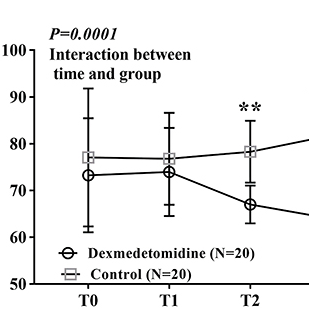
Dexmedetomidine Improved Sleep Quality in the ICU After Laryngectomy
This pilot study found that a 0.03 μg/kg/h dexmedetomidine infusion improved objective and subjective sleep quality in patients admitted to the ICU after laryngectomy. The dosing regimen used was safe and feasible for use... read more
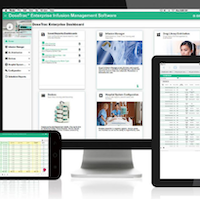
Infusion Management Software Can Seamlessly Connect Thousands Pumps Across Facilities
A newly-launched next-generation infusion management platform provides organizations with a blend of real-time views and retrospective reporting capabilities, enhancing the understanding of their infusion pump fleet and associated... read more

Bedside Procedures in the ICU
This handbook is a guide to best practice in interventions commonly encountered in the ICU. It is clinically orientated providing step-by-step explanations and illustrations of most invasive procedures, check lists to make... read more

Intravenous Tenecteplase vs. Alteplase for Acute Ischemic Stroke
Between Dec 10, 2019, and Jan 25, 2022, 1,600 patients were enrolled and randomly assigned to tenecteplase (n=816) or alteplase (n=784), of whom 1577 were included in the intention-to-treat (ITT) population (n=806 tenecteplase;... read more

Epinephrine vs. Norepinephrine in Cardiac Arrest Patients with Post-resuscitation Shock
Among patients with post-resuscitation shock after out-of-hospital cardiac arrest, use of epinephrine was associated with higher all-cause and cardiovascular-specific mortality, compared with norepinephrine infusion. Until... read more
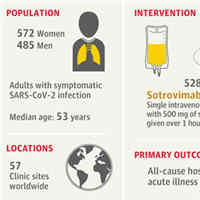
Sotrovimab Effect Among High-risk COVID-19 Patients
Among nonhospitalized patients with mild to moderate COVID-19 and at risk of disease progression, a single intravenous dose of sotrovimab, compared with placebo, significantly reduced the risk of a composite end point of... read more
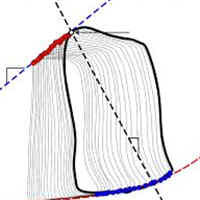
Ventriculo-Arterial Coupling Analysis Predicts the Hemodynamic Response to Norepinephrine in Hypotensive Postoperative Patients
In patients with arterial hypotension norepinephrine increased end-systolic ventricular elastance and arterial elastance. The effects of norepinephrine on stroke volume depend on baseline ventriculo-arterial coupling. Although... read more
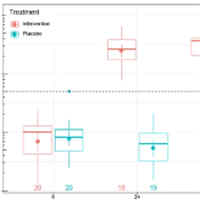
Intravenous Vitamin C Administration to Septic Shock Patients
Our pilot study indicated that intravenous vitamin C did not provide significant decreases in the mean dose or duration of vasopressor infusion. Further research that takes into account the potential impact of intervention... read more

Ketamine vs. Nonketamine Regimens for Analgosedation in the ICU
Results suggest ketamine as an adjunct analgosedative has the potential to reduce opioid exposure in postoperative and MV patients in the ICU. More RCTs are required before recommending routine use of ketamine in select populations. A... read more

ERC-ESICM Guidelines on Temperature Control After Cardiac Arrest in Adults
The aim of these guidelines is to provide evidence‑based guidance for temperature control in adults who are comatose after resuscitation from either in-hospital or out-of-hospital cardiac arrest, regardless of the underlying... read more




